After Kenyon
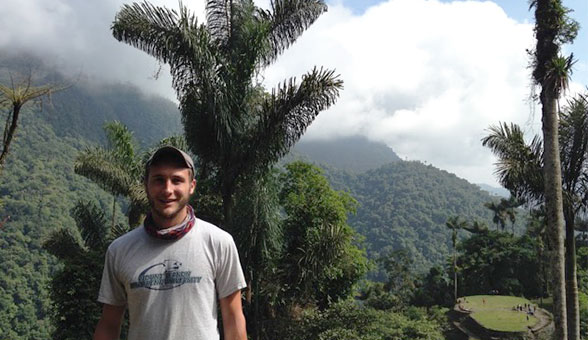
Otis Wortley '13
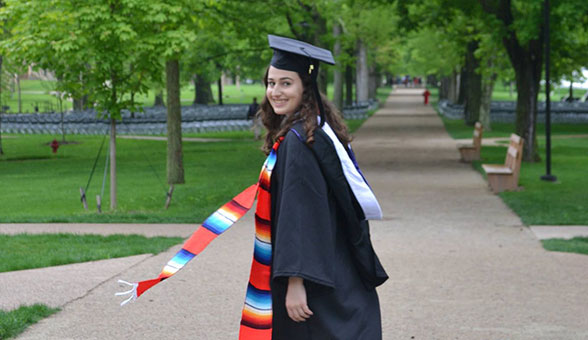
Anne Malkoff '16
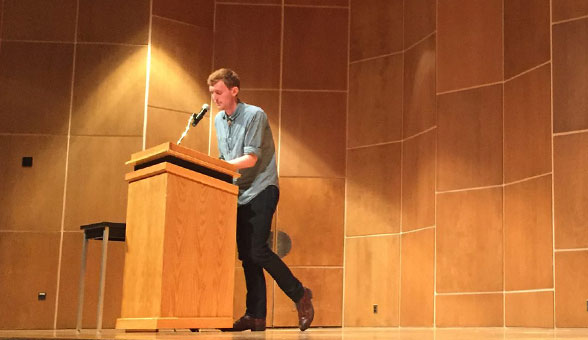
Chris Philpot '12
From professional careers to graduate studies to non-profit work, here is a look at how Latino/a studies graduates make their mark beyond the Hill.
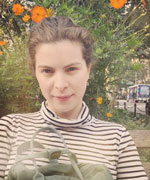
Hannah Beckerman '14
My Latino studies concentration heavily shaped my career interests upon graduating Kenyon in 2014. I strongly believe that my coursework and service learning experiences led me to pursue a career in bilingual social services.
For the past two years, I have worked for Mount Sinai Hospital’s social work department in New York City for a program called Health Home that provides comprehensive care coordination services to chronically ill patients on Medicaid. Working in Harlem, a lot of the patients on my caseload are Latino and Spanish-speaking. The Latino studies' social justice orientation and emphasis on civic engagement prepared me to enter the field of social work as a more culturally-competent and knowledgeable advocate for my Latino patients.
I recently began a Masters of social work program at the Silberman School of Social Work at Hunter College, and the groundwork and historical context that the Latino studies concentration provided me continues to resonate and inform my learning as a graduate student.
I am forever grateful that Kenyon developed a Latino studies concentration because it served as such a formative stepping-stone for my career as a social worker.
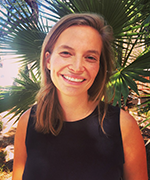
Beth Lowry '12
After graduating from Kenyon, I spent a year in El Paso, Texas where I worked as a live-in volunteer with Annunciation House, a house of hospitality for individuals and families who have recently immigrated to the U.S., most of whom are seeking asylum from violence in Mexico and Central America.
I currently live in Tucson where I work as a legal assistant and case worker with the Florence Immigrant and Refugee Rights Project, providing direct services and advocating for individuals (both children and adults) who are detained in Arizona. Living in the borderlands has made vivid the destructive impact of the militarization of the border and the detention system on the Latino/a community in the U.S.
I feel grateful for the Latino studies concentration in that it provided me with a critical lens for understanding the historical context by which the immigrant community has been criminalized in the U.S. and introduced me to resistance movements, thereby motivating me to become an effective advocate in confronting systemic injustice.
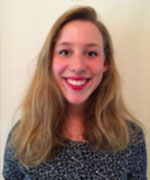
Gena Madory '14
The choice to join the Latino studies concentration was one of the best decisions I made at Kenyon and has had a profound impact on my career path after graduating. The work I did alongside Professor Román-Odio and my peers in the concentration led me to thinking and working beyond myself and beyond the Kenyon bubble. We engaged in powerful research and hands-on projects that involved continuously learning from and with majority Latino communities living mere miles away from campus. This work opened my eyes to my passion for meaningful and collaborative community engagement and has had a great influence on my career path since graduating.
Thanks in large part to Professor Román-Odio and my work in the concentration, I was able to participate in the Institute for Recruitment of Teachers (IRT) the summer after I graduated. The IRT is a program that makes it financially possible for aspiring transformative educators to apply to graduate schools for education.
The next year, I attended the Stanford Teacher Education Program to get my Masters in elementary education and a bilingual authorization. This was an incredible program where I was able to marry theory and practice and where I had the good fortune of student-teaching in a dual-immersion school in Mountain View, California. I am now in my eighth week of teaching full time as a kindergarten teacher at the same school. I love that I am able to engage each day with an amazing community and continually work to transform the educational systems in place while supporting further growth of bilingual education.
I'm not sure if and when I would have found this path and this passion without being a part of the Latino studies concentration at Kenyon.
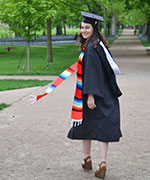
Anne Malkoff '16
I am now a first year doctoral student in Marquette's clinical psychology Ph.D. program, where I am being mentored by Dr. Alyson Gerdes. I have the privilege of working with Dr. Gerdes on her NIH-funded grant to develop a culturally adapted treatment intervention designed for diagnosing and treating ADHD among Latinx children/families. I am very excited about the work that we are doing, and I am hoping to continue to implement the many lessons I learned during my time at Kenyon into my new research.
As a student in the concentration, I received invaluable experience with community engaged learning/research through the mentorship of Dr. López, through her research on ataques de nervios, and Dr. Román-Odio as an oral translator with the LIRA project.
Further, my off-campus study experience with the Border Studies Program was — and continues to be — a tremendously influential intellectual and personal learning experience. I am planning on incorporating my studies of the U.S./México borderlands into my current course of study through my master's thesis next year; my current plan is to do a comparative analysis of help-seeking behaviors within our community sample of Latinx families in Milwaukee with a community sample in México.
Lastly, I recently co-presented on an upcoming publication on ataques de nervios with Dr. López at the National Latino/a Psychological Association's conference. This was not only a huge opportunity for me professionally, but also demonstrates how the relationships that I formed with the concentration's faculty have continued to develop and grow post-Kenyon.
I continue to say that pursuing the Latinx studies concentration was the best decision that I ever made during my time at Kenyon, and I am so incredibly thankful to the faculty members for their unprecedented dedication and support of their students. I wouldn't be where I am today without you all!
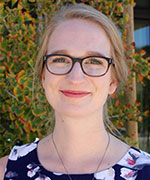
Alexa McElroy '16
I work as the Spanish Teaching Fellow at Pacific Ridge School, a rigorous independent middle and high school located near San Diego, California. The position combines a mentorship model with instruction in pedagogy grounded in the school's unique dedication to global engagement as a value. Pacific Ridge's focus on cultural understanding and fluency along with it's location near the U.S.-Mexico border makes it an incredible space for cultural education and exploration.
My work in the Latino studies concentration at Kenyon was integral in preparing me to guide my students through their Spanish language and grammar curriculum in a way that ties these skills to the incredible array of diverse Latinx communities that surround them.
Learning about border issues, multiculturalism, intersectionality and identity in psychological and sociological contexts gave me the capacity to make Spanish in my classroom connected to the living, breathing language that surrounds them, rather than just what they read in their textbooks.
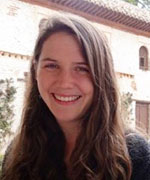
Laura Messenger '16
I am working at City Year San Antonio, an education non-profit under AmeriCorps serving to keep students on track to graduate. Although City Year is present at seven public schools in the San Antonio Independent School District (SAISD), I work at Lanier High School in a ninth grade Algebra I classroom. At Lanier, I assist in general classroom instruction as well as work with twenty students who are on my "focus list" for either attendance, behavior or coursework.
At a school that is over 90 percent Latino, I find myself pulling heavily from what I learned as a Latino studies concentrator. I reflect almost constantly on our Latinos in Education unit from Professor Lopez’s Latino Psychology class, as each day I witness in practice the challenges my students face: the "school-to-prison pipeline" (our school is brimming with police officers), the lack of Latino authors in the English curriculum, and the sparse amount of ELL services available at the school. The work I do is on a micro-level, student-to-student, but I can only hope that it makes a small difference in the face of many factors in the education system that need to change.
Although the work is challenging and often sobering, I feel very fortunate to be able to extend what I learned as a Latino studies concentrator into my life after Kenyon.
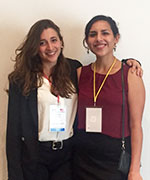
Patricia Mota '16 (at right)
I am currently an English teaching assistant for the University of Veracruz in the city of Córdoba. I work within its center for languages where they teach English, French and German. My classes range in age, so I have had the pleasure of interacting with a diverse range of students.
The "precious knowledge" I gathered from the Latino studies concentration at Kenyon has helped me navigate Mexico with purpose. While my students and I are culturally similar, we are also very different. I often refer to my bicultural experience as a way of teaching not only about the diversity present in the United States but to also show the ever-changing nature of language.
Because university students in Veracruz must pass an English exam called TOEFL to study abroad or obtain scholarships, my goal is to make the use of English accessible in their daily lives. With this goal in mind, we have begun reading excerpts from Sandra Cisneros’s "House on Mango Street" and I am currently planning a pen pal program between the Pomfret school in Connecticut and students enrolled in the Centro de Idiomas.
Cassandra Brumback '16 is working as a Spanish teacher at Pomfret and has agreed to have her students participate in this cultural exchange. We hope that this will give our students a platform in which to explore the relationship between language and culture in the U.S. and Mexico.
The Latino studies concentration has accompanied me in my travels, it inspires, makes me critical and aware of my position as a Mexican-American in Mexico. Though I have plans to pursue a Ph.D in Hispanic studies, the impact bilingualism and citizenship has on a person’s success or failure has filled my mind with an urgency to enter the Latino classroom after Fulbright.
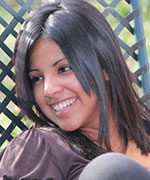
Jacky Neri Arias '13
I graduated from Kenyon in 2013 with a major in Spanish area studies and a concentration in Latino/a studies. As a result of taking courses in Latino/a studies, I became interested in helping professions that specifically worked with Latinxs in the United States.
After graduating Kenyon, I taught Spanish at a boarding high school and I realized that I loved teaching Spanish, but my real passion was in working directly with students outside of the classroom. I decided to pursue a master's degree at the University of Maryland. I graduated with a Master of Education with a concentration in student affairs in May 2016.
While I was in graduate school, my Latino/a studies concentration was extremely useful. In fact, my formal academic knowledge of Latinxs in the U.S. set me apart from my peers who were interested in similar topics, but had only had personal experiences with the culture, but no academic or formal training in working with Latinxs. I was able to get a graduate assistantship in a program that focused on dialogues on controversial and diversity issues, including immigration, race, gender, etc. I wrote my master's thesis on faculty advisors as mentors for Latinx students, an experience that began at Kenyon College and continued to be strengthened throughout graduate school.
My interdisciplinary major and concentration was imperative in designing a competitive resume, cover letter, and personal statement for jobs and graduate school. My current position at Kenyon College as an assistant director in the Office of Diversity, Equity, and Inclusion requires that I use my knowledge of diverse student populations on a daily basis, but in particular Latinx students as Kenyon makes a bigger effort in supporting the growing Latinx student population.
I am grateful and so fortunate to have had the opportunity to have a concentration in Latinx studies as it has opened doors to me that may not have opened otherwise. In addition, it was an honor to learn about my own culture and have my identity affirmed in an academic setting.
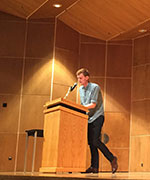
Chris Philpot '12
Immediately after graduating, I moved to Washington, D.C., where I started working at the Latin American Youth Center (LAYC). During my first year there, I coordinated our HIV, STI and pregnancy testing program. During my second year at LAYC, I was a case manager working with homeless LGBTQ youth of color. After two years at LAYC, I decided to head back to school: I'm currently in my last year of the MFA program in poetry at the University of Maryland, where I've also had the chance to independently teach undergraduate courses on academic writing and poetry.
Both in the workforce and in grad school, some important lessons from Kenyon have stuck with me — particularly those lessons learned in classes that now form part of the Latino studies concentration. For example, I can't imagine working with homeless LGBTQ youth of color without having some knowledge of intersectionality, a concept that was introduced to me in Professor Román-Odio's Chican@ Studies course.
As a teaching assistant at the University of Maryland, I was really excited about the possibility of having my students collaborate with each other — so much so that I designed an entire semester around the idea of collaboration in poetry! By the end of the semester, my students were writing collaborative poems that absolutely blew me away. I got this idea from Professor Román-Odio's Transnational Feminisms course where we also turned in a final that was 100 percent collaborative, an exercise that taught me a lot about myself and how to create bridges across difference.
I'm not sure what I'll be doing come next spring, but the classes I took at Kenyon have instilled in me the value of social change, and I hope to continue to work toward that end, wherever I end up.
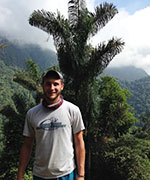
Otis Wortley '13
I have always fantasized about being a high school teacher, but it was my experiences at Kenyon within the Latino studies concentration that led me to a career in teaching Spanish. In my years since graduating, I have found meaningful work in educating children of all ages about the environment, history and the Spanish language.
In my time as a Latino studies concentrator, I became aware of how inextricably linked these three themes are when talking about the Latino/a experience in the United States and the Americas. Having learned of the struggles (past and present) that face the Latino/a community, I recognized the importance of making access to knowledge about our nation’s Latin American communities and their influence on American identity available to newer generations of American children.
Given the diatribe around immigration and the border in today’s political discourse, and my eye-opening experience on the U.S.-Mexico border as part of my course work for the concentration, I felt impassioned to use contemporary issues and the history of Spanish-speaking and Latin American communities in the United States as a basis for learning the Spanish — to better know and understand a very important yet largely overlooked aspect of the American cultural landscape and identity.